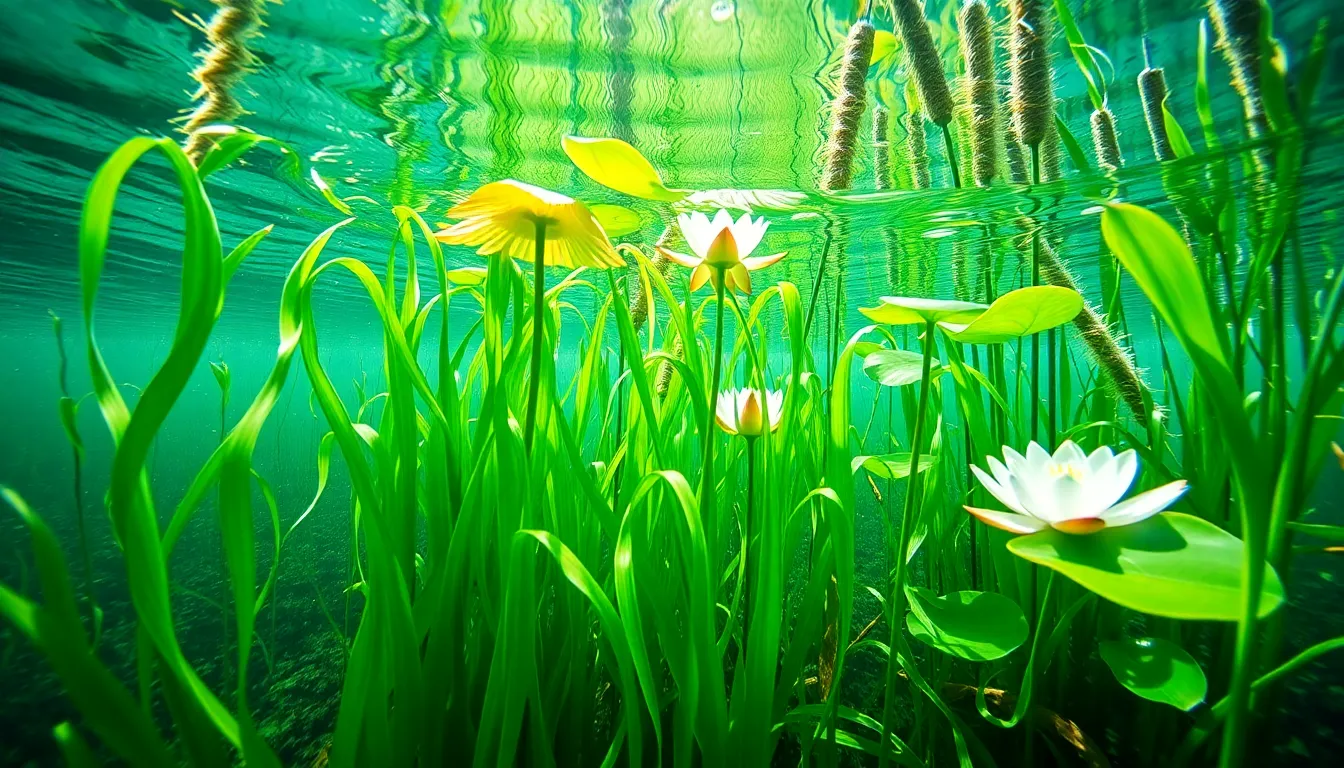Ever wondered what goes on below the surface of lakes and rivers? Aquatic biome plants are the unsung heroes of these bustling underwater worlds, providing vital habitats and oxygen, while also serving as nature’s water filters. With a dazzling array of species gliding through the water, these plants are a captivating part of our ecosystem. So put on your imaginary snorkel, and let’s jump into the remarkable world of aquatic plants.
aquatic biome plants

Aquatic biomes encompass a vast range of environments, from freshwater lakes to saline seas. Characterized by their unique hydrographic features and temperature variations, they offer a rich habitat for diverse flora and fauna. The characteristics of these biomes are shaped by factors such as water depth, salinity, and sunlight penetration. Freshwater biomes, including ponds and rivers, have low salt concentrations, while marine biomes, like oceans and estuaries, have higher salinity. It’s here that aquatic plants thrive, adapting to the specific conditions of their aquatic homes.
Types of Aquatic Biomes
Aquatic biomes are categorized into two main types: freshwater and marine. Freshwater biomes include rivers, lakes, ponds, and wetlands. Each of these subcategories boasts specific characteristics. For instance, lakes tend to have distinct zones, such as the littoral zone, where sunlight fuels plant growth. On the other hand, marine biomes cover about 70% of our planet’s surface, featuring oceans, coral reefs, and estuaries. Each biome supports unique life forms, exhibiting remarkable adaptations to their aquatic surroundings.
Role of Aquatic Plants in Ecosystems
Aquatic plants serve multiple functions within their ecosystems. First, they are crucial in producing oxygen through photosynthesis, benefiting aquatic animals. They act as a food source for various organisms ranging from fish to herbivorous insects. Also, aquatic plants provide shelter, allowing smaller creatures to hide from predators. Besides, they contribute to nutrient cycling, improving water clarity and quality. In short, they are the backbone of aquatic ecosystems, fostering a delicate balance of life.
Common Aquatic Plants
Several plant species dominate aquatic biomes, showcasing remarkable diversity. Some of the most common include:
- Elodea (Waterweed): A favorite among aquarium enthusiasts, this submerged plant provides incredible habitat and oxygen.
- Water Lilies: Known for their beautiful floating leaves and flowers, these plants bask in the sun while their roots anchor them to the muddy bottom.
- Cattails: These tall, reed-like plants thrive in wetlands, offering shelter and food for many aquatic creatures.
- Duckweed: A floating plant that reproduces rapidly, duckweed plays an essential role in wetland ecosystems.
Each of these species excels in its unique aquatic environment, playing a crucial role in sustaining biodiversity.
Adaptations of Aquatic Plants
Aquatic plants exhibit extraordinary adaptations that allow them to thrive in watery conditions. For instance, many species possess specialized air-filled tissues, known as aerenchyma, enabling them to float and capture sunlight more efficiently. Water lilies boast broad, flat leaves while submerged in water to maximize light capture. Some plants have flexible stems that bend under water currents, preventing breakage. Also, certain species develop strategies to cope with varying water levels, adapting to both flooding and drought conditions. Through these ingenious adaptations, aquatic plants maintain their ecosystems and promote resilience.
Threats to Aquatic Plant Life
Even though their resilience, aquatic plants face numerous threats that endanger their survival. Pollution from agricultural runoff and urban waste leads to nutrient overloads, causing harmful algal blooms that choke aquatic plant life. Climate change alters temperature and precipitation patterns, disrupting delicate ecosystems. Invasive species also pose a significant threat, often outcompeting native plants and leading to biodiversity loss. Also, habitat destruction due to urban development and dredging projects further facilitates declines in aquatic plant populations. Addressing these challenges is crucial for preserving aquatic biomes.
Conservation Efforts for Aquatic Plants
As stewardship for the planet increases, various conservation efforts have emerged to protect aquatic plants and their ecosystems. Governments and organizations collaborate on initiatives aimed at restoring wetlands and combating invasive species. Educational programs also raise awareness about the importance of aquatic biodiversity, encouraging community involvement in river clean-up efforts and habitat restoration projects. Also, research plays a vital role in understanding and preserving these ecosystems. By fostering sustainable practices and protective measures, we can help safeguard the future of aquatic plants and the rich biodiversity they support.

